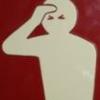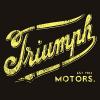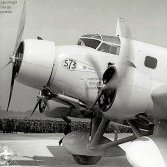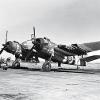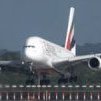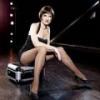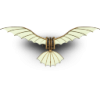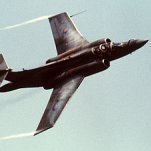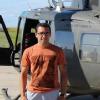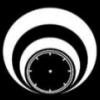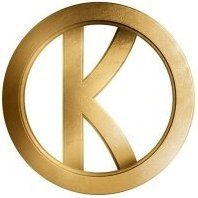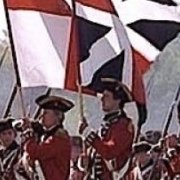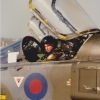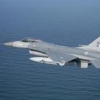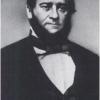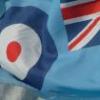Leaderboard
Popular Content
Showing content with the highest reputation on 17/10/17 in all areas
-
Hi folks, Here are a few images from the Film and TV GB I participated in a few years ago whereby I built the Phoenix from the Jimmy Stewart (i.e better!) version of the film Flight of the Phoenix using the Italeri C-119G kit. The photos aren't great but the model is packed away so I can't take new ones at the moment. Hope you like it. Mike37 points
-
An order for a friend born in Algeria, a P-47 D-30-RA of EC 1/20 Aurès-Némentcha, based on the Oran-la-Sénia base in 1956. The squadron kept its p-47s until December 1957. They were returned to 2/20 ... which kept them in flight with great care until September 1960. For the anecdote, it is the plane I have just mounted that will "let go" the last French driver on P-47! Model Tamiya 1/48 transformed into D-30, very easy assembly, I added only the harnesses and brake hoses Just still small concerns with decals Berna Decals ... which do not stick well and do not react to softener products Another pictures on my FB's wall: https://www.facebook.com/jbfrenchfrogmodels/26 points
-
My attempt at the old 1962 Airfix B-17G "a bit of lace" kit, built as part of the radial engines group. I know a lot of people will have fond memories of this old kit and it's artwork, I know that I certainly do. With four new B-17s in the stash I was not looking to get anything accurate, detailed or impressive from this build, all I wanted was a nice neatly built retro looking model of this old favorite. Unfortunately this old kit is an absolute stinker to build, the reason why is because the kits many transparencies are simply the wrong shape and size and do not fit the fuselage. Before beginning the build one of my main hopes was to keep as much of the riveted surface detail as possible, the reality was however a choice between keeping the rivets and the windows fitting neatly, and the windows won. I could of course have kept the rivets on the wings and tail but decided it was better to keep everything looking the same. What you see here is a sanded down finished model with a two tone salt weathered alclad finish. I decided to model "a bit o lace" as it was before it received flak damage to the rudder but with the earlier damage to the port wing. All original parts except a few guns and windows. The last picture is of the Matchbox B-17G kit, which as much as I love Matchbox was another stinker to build thanks to its transparent parts. It is a toss up which is the worst kit of these two kits to build. I am happy enough with the finished builds though.23 points
-
Having had some time off work - I decided to tackled this kit - which has been sitting in the stash for some time. All in all it's a nice kit to make. The cockpit is a real joy. Lots of detail, nicely designed, goes together very well. I sprayed it Tamiya gunship grey, then sponged on vallejo neutral grey, and pale grey to break up the surfaced and create some highlights on rims of seats etc. Once the cockpit is done, and the canopy masked off the rest of the kit is actually extremely fast to finish. The part count outside the cockpit is pretty small. I used the Eduard masks for this, as the idea of doing it myself was too terrifying. There was a fair amount of sanding needed to get the transparent parts flush with the wing roots. Once the plane was together I decided at the last minute to go down a 'what if' route. I am a bit bored of doing the usual green / grey splinter camo, and had some rattle cans knocking about that would allow for a desert version. I haven't seen any photos of a Bv-141 in the desert, so this is all a bit fanciful. Once the main 3 colours were on, I did quite a lot of post-shading using white and umber oil paint - put directly on the kit then blended in roughly in panel areas. Quite happy with how it went, once I practice I think it will be better at keeping it to the right areas and accordingly it will look better. Finally I splodged the with humbrol weathering pigment 'sand yellow'. The landing light is a little bit of kitchen foil. Seat belts are wine bottle foil. Thanks for looking - all criticisms welcome! Bruce19 points
-
I'd like to show completed work at the very first. I was always want to show a group of planes one by one rolling in sky by modeling, but couldn't fine a good way to show that, until one day, a friend introduced me Eduard 1/144 Spitfire, then suddenly I got an idea! That is use this 144th kit, along with a 72nd kit, mix these two scales into one diorama. 72nd one on near side, the 144th one on far side, that should show a “near big and far small” view(or perspective view? I don't know correct way in English, sorry). Then set each of them in a particular angle, so that may work. Since Spitfire has been chosen, I though story background should best to show some British way, and, with a warm story such as back home could be better than a combat story. The famous white dover cliff no doubt is the best for this story. So, I thought: that it, start to built it! I choose Eduard 144th Spitfire Mk.IX, and an Italeri kit as 72nd one. Painted with late RAF camouflage, and very light wethering, after all, wethering isn't the point, right? Notice the pilots, these two kits didn't contain, so I cut two plastic stick, painted with brown, to simulate a pilot Then drill a hole, for TAMIYA clear plastic pipe, which is the way to fix plane on the background. Notice these two pipes are on different angle. Searched a high quality photo of dover cliff. That is really beautiful! I hope someday come to see the cliff myself. I cut a plastic board to brace the photo frame. And superposed three plastic board for hold the plane and pipe. Also drill two holes on the picture, well, seems I need some practice for drilling on paper··· To show the spinning propeller is another keypoint. I chose a cell phone screen film, cut a circle with circle cut. Then cut paper templet to paint the spinning propeller. At last, assemble Spitfire into the frame. And adjust two planes' angle, make it looks like the 144th Spitfire is leading the 72nd Spitfire rolling and return to airbase. Complete! I quite like this picture, it seems like two planes are flying into a dream. Thanks for review. Good luck for all of you my friends.15 points
-
Thanks for the compliments guys. After the week of traveling hell it was nice to get back to the basement. It's a bit of a mixed bag this update - it started off reasonably well and I was really happy with how the fire extinguisher turned out. Isn't it amazing how something so simple can make you feel good. I also remembered to add the missing ribs from the cabin bulkhead. Here in all it's macro-fied fugliness is the cabin bulkhead. Nasty I call it. From all the research I have done, these panels were never painted with anything approaching neatness and the black anti-slip coating always looked like it was applied with the hangar floor brush. However, when you try to replicate an untidy finish, it always looks like the proverbial pile of.. doesn't it? I'll console myself with the fact that it's better than the kit offering. Some weathering wouldn't go amiss though. Definitely a lot happier with the extinguisher - I had to search to find a bit of green transfer to use as the label and ended up stealing a bit from a sometime future Whirlwind build. The clamp is made from flattened lead wire, and I finished the extinguisher head off with some model master jet exhaust. I thought brass paint looked too well, brassy. A few bits of paint here and there. Valves and unions were highlighted in flat aluminum and steel with a little dab of red and yellow here and there to try and pose as labeling on the tubing. I also added two small gems as exit lights with several dollops of clear red to try and darken them down a bit. The port side was then given a gloss coat followed by some Flory washes. It's looking a bit gruesome in this photo - particularly around the windows. Try as I might, I just couldn't stop the old age tremble when trying to paint the "rubber" surround. Thankfully, most of the mess is on masking tape, but I might still try and tidy it up a bit more. Oh, just in case you were wondering - the washes have not been cleaned up yet. Honestly.... Then back to the bulkhead again. The small T handled thingy was added, along with another sort of nose shaped protuberance just below the extinguisher. Then... Something I had completely forgotten about and did not include in my last Wessi build, was the fire axe. I came across it in a photo the other day - a fire axe and a small object from Messrs. Smith & Severin ...aka I completely missed them in my last build. So, in process additional bits.... Then the only way I could think to try and make a glove was to use a bit of milliput. There are some folks on this site who are amazing sculptors, and I know for certain that I will never be one of those. However, with a bit of fettling, filing, sanding, painting and weathering, I might be able to make one of these attempts look something like a glove, especially when I hide it behind some webbing straps. Time will tell. (what a clipe that time can be) and while the milliput was mixed I used the leftovers to try and start on the ducting - looks like it needs a bit more work. Not really a great deal of progress, but at least heading in the right direction. I shall now head off and clean up some of those washes.14 points
-
Here are some images of my recently finished RS Models Avro-Cierva C.30 Autogiro in 1:72. The models depicts a C.30 as used by the Aviación Militar just prior to and during the early stages of the Spanish Civil War. The model was build pretty much straight from the box; I just added the push rods on the engine and used some alternative markings from the decal dungeon to depict an aircraft I found in photographs from the era. Thank you for watching!13 points
-
Hi all, After a long absence of model building, i finally got around to completing some builds. The Airfix Mig kit was alright though it wasn't the best. Constructive criticism welcome12 points
-
Probably not oil dotting, I think; these aircraft weren't in service for long enough to get seriously faded (not least because they didn't go to sea). I might do a little, but having seen @woody37's fabulous results with pastels on his Lincoln, I think I'm going to do any further weathering that way - after all, one of the points of this build was to try new techniques (actually I have used pastels a bit, so it wouldn't be completely new to me). Thanks for the compliment; I try to build something that looks at least plausible - wartime aircraft certainly got into a right state at times, but this is 4 years later on an RNVR Squadron which only flew at weekends, so they FR46s weren't thrashed to death. Less is more! Anyway, the transfers / stickers / decals are all on: The only markings now missing are the yellow cut marks around the canopy (which will have to await unmasking, obviously), plus the side numbers (the yellow 104 marks). The side numbers are going to be sprayed through Montex masks, just like the under wing serials - I have left them until now because I thought it was going to be tough to line them up with nothing else around. The undercarriage also awaits - it's ready, but won't be going on until all painting & weathering is complete. I am away all day tomorrow, but reckon we're pretty close to RFI now. Crisp12 points
-
Hello everyone! Having recently finished wrestling with the ICM Bf109F I decided to take a break from tough-to-build kits by building the....ICM Spitfire VII! I built this kit about a year ago but an unfortunate reaction with the paint meant that it was a bit of a mess underneath and I was never happy with it. I ended up scrapping that kit and using its innards to build another kit, which you see here! I decided to build an aircraft that did not have the high-altitude tips as I had recently built a Spitfire VI and quite frankly I dont like them! Pictures show that MD111 of 131 Squadron did not have them fitted in July 1944 and hence became my choice of subject. The following mods were made to the ICM kit: Ultracast Propellor and cannons Spare Eduard gear legs Cockpit door deleted and cockpit pressure bulkhead scratchbuilt. Canopy rails from plastic sheet High-altitude paint scheme, paints by xtracrylics Decals from the spares box Hope you like it! I have attached a picture of her older sister the Mk.VI at the bottom to show the contrast with the colours and wingtips. Chris11 points
-
This is one rescued from the shelf of doom, a Dynavector 1/48 Scimitar F1 , nice vacform with a fairly easy build , but not helped by my decision to fold the wings. Seemed to lose interest about half way through the build so it got left for about 12 months, but decided to get it finished , after all the Scimitar is one of my favourite aircraft. Finished in Halfords finest, EDSG over appliance white, with scratch built ladder and intake blanks. Aircraft represents a machine of 800 Sqd FAA in 1961.11 points
-
Thanks John - I don't know how we solve this tailgater problem short of ammunition. My youngest drives far too close and when I eventually asked her to back off she said "But I was taught that you were OK as long as you could see the tyres of the car in front". When I told her that was when you stopped behind a car so you could pull around it if it broke down she said "Oh, right". Now whenever I see a tailgater in Bath I wonder if they had the same instructor. 'Only a fool breaks the two second rule', that's my aide-memoire. Thanks Simon, Keith, Benedikt, Jaime and Stew - I think I'm getting there, slowly, but the phrase 'pig's ear' keeps coming into my head Thanks Rob - sad you've missed the chance of a Lightning flight although I guess that would be really expensive! Certification is going to be an increasing problem I guess as the old aircraft reach flying hours where no one knows if they're safe or not, like the Vulcan. Thanks Benedikt - good idea (see below) but I want to keep the front of the nacelles narrow to match the spinners. I've had a change of heart this morning... Filed and sanded the Humbrol which has given me a rough shape to work on: Untitled by Ced Bufton, on Flickr Out with the dental burrs and Dremel to open up the rear of the cowlings: ... which I'll bung some black paint in at the end (if I remember). Looking at the awful mess on the top I decided to chop off the lumps and search the stash for some suitable vent things. The sprue attachments on Eduard's Spitfire looked like a good start: ... but then I saw this: Hmmm. Saw off the mess on the top, cut off the front exhaust, take a bit off the bottom... ... and then stick them on with plenty of TET, pushing them into position: Good enough for the ceiling.11 points
-
Ok i started this build back in July and had to shelve it temporarily due to paint shortages through mid August. But Im going to consider this done with the exception of some Do not step decals and weathering. I should add these were the worst decals I’ve dealt with in 30 + years of model building. The glue was so thick everytime i worked with the decals it felt like my hands were covered in vaseline. Mind you i work with water in the 120+ degree range. I know how to work with Japanese decals. They were so slimy and did not want to work to well. I had two complete sets of original decals to work with i was able to save just two each of the white base and red field “omega” tail decals. The glue i blame on hasegawa the bad decals due to improper storage. This is one of many kits i was given by a friend who cleared out his storage unit stash. He didn't want to transport them 1000 miles so i was allowed to take anything i wanted. Thank you my friend. So without further boring you with a long write-up i give you my Fg.1 Phantom Circa 1975-1976 Ark Royal Cruise. The original teaser photo ⬆️ And the rest pf the photo’s. ⬇️ Ok some detail shots first up is the spey engine i used real foil stained with cooked eggs. To this i stained it further by adding some blue and copper tones drybrushed onto the foil. ⬇️ And the cockpit’s ⬇️ The eagle eyed among you will have spotted the Two different drop tank paint schemes. Thats done on purpose. During my research one of the members directed me to the Ark Royal’s Cruise books and when digging throught the assorted photo’s i found this photo i reprint here giving full credit to the Ark Royal crews and association. ⬇️ If you look closely i duplicated this pattern. I found everything from all white to all Dark sea Grey to mixed variations. So I lay my self on the Forums bench and await your decision if it meets the criteria for an Fg.1 Phantom from #892 Squadron. I’d like to add Great Thank You’s to all the members that gave me helpful advice in my Cold war question thread. This was a duel build with my EE F.3 Lightning. If anyone is interested here is a link to view that RFI. I say Thank You in Advance Dennis9 points
-
Thanks Rob - crikey, $20,000 IS expensive, even for Lightning but I guess for those who've done it worth every penny dollar. I seem to remember some RAF Phantoms up for sale years ago... they seemed cheap until you saw the 'buyer collects' clause Thanks Simon - I'm sure you don't want people to buy more Spitfires just for the spares I did feel a bit guilty to be honest but then I thought 'When will I use all these bits anyway?' Better hold onto them though, just in case. Thanks Giorgio A bit more bashing this afternoon. I keep saying I need the nacelle fronts to be the same size as the spinners so I thought it was time to tackle these: Untitled by Ced Bufton, on Flickr 'orrid, again. No, the spinners don't have bushes on the back and no, there are no thick mounts around the prop shafts. After several eye watering minutes with these tools I now have some clean props: ... and some very smooth, dusty fingers. The final madness was to add the missing intakes on the front and to try and round out the intakes using the thinnest tool I have: Then I suddenly re-focused back to the real world, saw the real size of the intakes and thought ENOUGH! Onwards!9 points
-
I was reading about that 'Krakatoa' sky you had over there Keith - apparently both Sahara and the fires in Portugal & Spain have chucked a load of particulates into the atmosphere and they got shunted Northwards by the storm system. I don't know why I didn't think of that sooner tbh Keith - one of the things that always made me chary of scribing in the past was the feeling that the part might slip and skitter off along the desk; this way there's a nice resistance to push against and stop that happening... Thanks for the concerns Ced. We got off very lucky here - there's still 200,000 homes without power here as I write. As to sky colours, I think it means we are all sinners and must repent, or is it that we've been repenting too much and must sin more? It's so confusing... Your president too in some countries.... Another instance of predictive technology... Thanks Chris. Anyone having their wedding photographed yesterday afternoon would be looking decidedly Edwardian-retro... The drive to and from work was...'exciting' shall we say. A fairly challenging slalom course of rally-driving for about half of the way in with various trees half blocking the road from the sides of the hedges. The schools were all still out here so traffic itself was quite light compared to the usual battle of the Orcs... Mad isn't it? There's so much more heat energy in the atmosphere now that turbulence and unpredictability have almost become the new norms... We did Benedikt - my thanks for that. Ta for that Tomo. Paryty? Are you mad? I'm still finding slices of lemon and puffin feathers after the last one. And who's was the pangolin that's still here? For so small a creature it consumes it's own weight in bacon every 24hrs....my neighbours are now openly suspicious about the growing cluster of pig abductions in the area... Agreed. I found my technique improved here this time simply because of resting the scribed part on a thick layer of foam - this gave me so much more confidence that it wasn't going anywhere and seemed also to give a greater sense of control over the gradual scribing-in of the lines, due to the slight 'give' of the part against the foam. I'm certainly feeling much more positive and friendly towards the SCR-01 as a result now. Interesting. I must have a look at that approach also. Big steel ruler for the long axes Jaime: Small steel ruler flexed down for the cross-axis: I'll no doubt be resorting to thin strips of Dymo for the contours of the gondola and later-on the fuselage. Pardon my manners for not asking about your own situation in Portugal Jaime - I do so hope that you and yours are safely away from any conflagrations. I won't get any building in tonight for two reasons. Bad news is I've a lot of work-work that needs catching up on after yesterday. Good news? The Iwata was waiting when I got home earlier and I'm just playing some ink through it onto paper to get a feel. I am in raptures with the quality of it. Glad that I served my time on cheapie clones, but the action and results of this are worth every florin. Tony9 points
-
...and done! I wanted to scratch some detail in the cockpit, which contributed to my failure to finish in the 24hour GB, and having cockpit canopies open provides a neat way of avoiding dodgy shape, transparency and fit issues! On my F-111 build I was very taken with the idea of the dummy engine fronts in the intakes, even though they are nowhere like long enough. It looks much better than a blank wall. I wish I'd done it earlier in the build though! It's past 1am and I have a taxi to the airport at 0630 so I'd better go pack. I will get some RFI pictures when I get back from work in a couple of weeks. Thanks for looking, Adrian9 points
-
Thanks. I did see that technique on your splendid Stranraer build, and a good technique it is too. Thanks Steve. Bill has touched it as you know, so I'm hoping for some of his Wasp magic to have impregnated the Fury DNA. That it would be nice to have on hand some Fritag Acme etch home brew. Anyroad with the pit innards sorted I finally zipped up the fuselage. Nice fit, just a few blobs of gloop here and there. After curing I started tidying it up a little, but also made a start on cleaning up the wings. As I noted above, and others who have built this kit, the ribbing on the wings is outrageously overscale. To be expected on a kit this age, and fair dues in this game we expect to have to do some sanding. Unfortunately on other areas of the wing this is where the tooling shows its age: ot quite the look I’m after. First up I re-scribed the ailerons (well when I say re-scribed, I mean scribed as 40 odd years have taken its toll on this tooling), and began to add the hinges via gloop. Then it was a case of sand sand sand and more blinkin’ sand. I didn’t want to remove the ribs completely though. Also I scribed out some hinges, scribed the centre section of the upper wing which is separate and contains the fuel tanks, opened up the two handholds, drilled out all the rigging holes with a 0.2mm drill (yep I busted a few drills), and drilled location holes for the aerials – the original offering had two little blobs of plastic which were in the wrong place (fair play to Matchbox though for attempting to reproduce them, and I’m sure 40 years ago they’d have been in better nick). With that done I added the aileron cranks and actuators – they sit on a little disc which I punched out of take-away tin foil. This is approximately the look I’m after: Here’s my offering. Should be able to blag it with a bit of primer and paint. Here’s the underside centre section, an improvement on the original offering. And a before and after of the wings: Next up is to get the bottom wing glued on, front cowling and cabane struts, finish off sanding the fuselage, repair the cabane struts that I will invariably bust off…9 points
-
I've had a repaint, hopfully it will be the last, theres some touch ups to do, but I'm holding fire until i can gauge reactions, or I'm told its downright wrong, Everything is only resting in place no glue, still some bits to do, right or wrong please let me know, Thanks Glynn9 points
-
Well here it is, the RFI thread for my Morane Saulnier Type G as flown by Captain Pjotr Nesterov of the Imperial Russian Air Service, the WIP thread of which can be found here. Before I show some pics of the finished article, I thought it might be appropriate to give a bit of background info on the man: (Image in the public domain) Pjotr Nikolayevic Nesterov was born on 27th February 1887 in Nizhny Novgorod, Russia, the son of Nesterov Nikolai Fedeorovich and Margaret Fiodorovona. In 1897, Nesterov entered into Nizhny Novgorod cadet military school (where his father had previously worked) to train and work as a soldier. He completed his training in 1904. Initially specialising in artillery, his first exposure to aviation came in 1909 when he was posted to a balloon observation regiment as an observer. In 1911 he built and flew his own glider, before being accepted into the St Petersburg Aviation School at Gatchina. He graduated from there in October 1912, and very soon after he passed the examination to become a military pilot. In May 1913, Nesterov was appointed commander of the XI Corps Air Squadron based at Syretzk Aerodrome near Kiev. On the evening of September 9th 1913, he set off in his 70hp Gnome Rotary-engined Nieuport IV monoplane and climbed to 1,000 metres. Shutting off the engine, he put the aircraft into a near vertical dive. At about 600 metres he pulled back as hard as he could on the control yoke, and simultaneously restarted the engine, powering the aircraft through a loop. Eventually the aircraft returned to a normal horizontal path; Nesterov had performed the first complete aerial loop in aviation history. Upon landing, he was promptly arrested, charged with "useless audacity" and "taking undue risk with a machine, the property of his government". When 12 days later, French aviator Celestin Adolphe Pegoud emulated the feat to wild acclaim in Paris, the charges against Nesterov were dropped and he was promoted to Staff Captain. A short while after, he was awarded a medal by the Central Aero Club of Russia. With the outbreak of war less than a year later, the various armed forces lost no time in making use of aircraft, albeit solely for scouting initially. Nesterov, by now flying another French design (a Morane-Saulnier Type G), was himself actively engaged in monitoring and reporting on Austrian troop movements. On the 27th August 1914, returning from a scouting mission he happened to pass over some of his own soldiers at low level. These ground troops, very few of whom had ever seen a flying machine, were unable to tell whether the aircraft above them was friend or foe; some of them panicked and opened fire. Fortunately the resulting damage to the aircraft was slight - a hole in the fuel tank - and Nesterov himself was not harmed. He was, however, rather annoyed! He landed his aircraft adjacent to the regimental HQ, and having immediately sought out the embarrassed senior officers, proceded to lecture them, using some very choice language, regarding the differences between Russian and Austrian/German aircraft markings! Having already arranged to have a serrated steel stake fitted to the tail skid of his aircraft with which to rip open enemy observation balloons, Nesterov announced his intention to bring down an enemy aircraft. He had formulated a plan to bring down his adversary by ramming it, and fatally damaging it with his undercarriage. His chance came on the 8th September when an Albatros B.II of the Austrian 11th Flieger Kompanie (piloted by Feldwebel Franz Malina, and carrying Oberleutnant Friedrich Baron von Rosenthal as the observer) was seen over the Russian lines near Żółkiew (now Zholkva, Ukraine), at too great a height to be troubled by Russian artillery. Nesterov took off and quickly climbed to meet the intruder. His colleagues on the ground witnessed the slower Austrian aircraft weaving to avoid the attentions of Nesterov in his smaller but faster mount. After several failed attempts, Nesterov finally succeeded in damaging the Austrian's upper wing, whereupon it plummeted earthwards in flames. Nesterov's aircraft, initially entangled in the Albatros' wreckage as it fell, became free at some point during the descent. However, all 3 men perished; the first casualties arising from an aircraft-to-aircraft confrontation. There is some conjecture as to the exact circumstances of Nesterov's death - some claim to have witnessed his aircraft turning upside down about 25 feet off the ground, causing him to fall from the cockpit (as was common practice at the time, he was not wearing a seat belt). Others, perhaps more fancifully, claim he managed to survive just long enough to crash-land his aircraft - minus its undercarriage - at his airfield. In any event, he died from a broken spine the following day. His body was laid to rest in a tomb in the historic cemetery of Askold, in Kiev, on the banks of the River Dnieper. It became a place of pilgrimage for fellow Russian aviators on each anniversary of his fatal encounter, even beyond the chaos of the October Revolution. His method of ramming an enemy aircraft, known as 'Taran', was never recommended as a tactic by the military hierarchy. Nevertheless, several other Russian pilots (Kozakov among them) were known to have resorted to it and survived. It was even employed during the Second World War by a number of Soviet pilots, with a modicum of success and without loss of life. Nesterov's memory lives on to this day; his name has been given to many streets of major Russian cities, several monuments, and even an asteroid. In 1962, the Central Aero Club sponsored the Nesterov Cup, to be awarded to winners of the World Aerobatic Championships, a name that the cup still retains. Here then, are some (ok, a lot!) photos of my own humble tribute to the man, a 1:72 scale model of his Morane Saulnier 'G', s/n 281: Hope you enjoy them, I had a whole lot of fun making this little kit and learning more about the life - and death - of the man who flew the real thing.7 points
-
Ту-22 - машина «105», продукт «А», «с» (НАТО: Блиндер [5]) - советский тяжелый сверхзвуковой самолет большой дальности, разработанный Туполевым. Построен в бомбардировщике, ракете, разведке и помехе. Предназначен для замены флота Ту-16. В дальнейших удачных вариантах Ту-22 были заменены различными сериями Ту-22М, Ту-22 в вариантах разведчиков, а глушители действовали до начала последнего десятилетия двадцатого века.7 points
-
Hello fellow modellers! I would like to show you my most recent finish. It´s the Italeri Vought AU-1 Corsair in 1/72. It´s a simple and well known kit. It has some inaccuracies, but I tried to improve it a little. I added some Eduard PE, vacuformed the sliding canopy, and some antennas. I used Print Scale decals for this aircraft. This brand has a lot of schemes for many different models, but there are always several errors. For example, the serial number for this plane says F4U-4, instead of AU-1. Some numerals are missing and the code letters are wrong size. However it ends different than the classic kit OOB. I tried to replicate some heavy weathering like seen on some photos. This time I didn´t use pastels, but airbrush and oil paints. The upper part of the flying surfaces was faded by elements and I wanted to show that effect. I hope you like it. Every critics and comments are welcomed. Best regards from Uruguay. Ignacio7 points
-
You'll be eating a lot of popcorn Dermo245 ! cleaning up the tread covers took me 3.5 hours last night, and the mess blocked my cordless workshop hoover up... grrr. These still need to have the rears sanded to a uniform thickness and then heat treated and flattened. Some pieces were badly cast and needed a lot of cleaning up and drilling out7 points
-
Hello This is an old favorite of an airplane released by a Hobbyboss, and I have been given the opportunity to make a few pictures of a finished model, I hope you like it and can do it for you. There are already more modeling Goodbye6 points
-
With Mrs Martian and the camera back from Chernobyl I can now bring pictures of progress that was made before I had to go to Oxford on parent duty. Detail painting has begun and the anti-glare panel and navigation light panels have been painted black. Next up is to finish the detail painting and get some coats of clear varnish on the model prior to decaling. Thanks for looking Martian6 points
-
<airliners.net pic removed> See below for reasoning. Здравствуйте! Представляю вашему вниманию новейшую модель. Маленькая помощь: Ту-114 Россия (сообщение НАТО: Cleat - «Клип») - это турбовинтовой пассажирский самолет с длинной дистанцией, спроектированный в СССР в 1955 году на базе бомбардировщика Ту-95. Произведен в 1961-1965 годах на заводе № 18 в Куйбышеве. Всего было построено только 31, серийный самолет. Что касается строительства, то от меня кровь сильно пила. Но ... несмотря на суставы (и, может быть, школы), конечный результат я доволен и смотрю на шкаф, он замечательный - вообще, мне не стыдно из этого! Во время строительства некоторые трудности пытались показать на фотографии.Крылья, учитывая предстоящую стрельбу в полевых условиях, обеспеченную 2-мя проходами от крыла через фюзеляж в крыло. Я особенно хочу отметить в комплекте Windows: хорошо отделить их от литника было невозможно. Так что Windows - прозрачный пластик из-под детских игрушек и еще что-то ... Съемка, как вы знаете6 points
-
6 points
-
Here's my entry into the Radial Engines Rock GB, Special Hobby's Tempest II in 1/72nd, No.33 Sqn based in Butterworth in 1951. Not a bad fitting kit, the main wing was the worse aspect, good job they include 2 vacform canopies as well. Vallejo ModelAir paint, decals by Xtradecal, rockets by Pavla.6 points
-
Hi all, First post in a wee while! Here's what I've been working on - the 1/72 Hasegawa SBD-5 Dauntless with markings courtesy of the old Aeromaster "Royal New Zealand Air Force in WW2" sheet. I've also used the Eduard etch set for the divebrakes - definately NOT designed to be mounted closed!! Hence it looks a bit ropey around the trailing edge of the wing. Hopefully the pics will show up as this is the first time I've used Photobucket! Preferred Imageshack, but they've gone pay only.... Mike.5 points
-
Hiya Folks, Got a bit of a modellers block at the moment so I`m going to have a go at the old Matchbox Wellington; Not sure which version yet,....... I`ll do some reading up. I quite fancy a black Coastal Command Mk.XIV with the chin radar,...... I remember seeing a photo of one painted like this behind some more common White Wimpey`s,.... but cannot find the pic now! Cheers Tony edit,.....I`ve since decided to built two models!5 points
-
Finally got to the end of this piece of nazi scrap Full build thread is HERE I hope you'll enjoy it Cheers Mick5 points
-
evening folks & thanks Dave, that is indeed a very useful shot so, a few steps forward in recent days... starting the skinning process - first a rough panel in plastic card..made by taking one straight edge and matching it to the airframe, then marking & cutting to get the rough shape involved as they are generally curved and fortunately only curving in one direction I can get away with just heat shaping the panel over a boiling kettle - I tape it so it is in the loose shape I want, hold it over the kettle's steam and then pop in the freezer for a minute or two.. ..this forces the plastic molecules to move & reset to a new shape... .. I then put liquid cement over all the stringers on the fuselage and spot CA'd the panels into position - it wasn't too neat so a bit of P38 filler evens out the form..... ..the engine cowling is proving tricky - the 'double bubble' of the big air scoop under the cowling just could not be done in one go, so I decided to shape the top part, which is very Spitfire like, so that it curves down and inwards at the lower parts where it intersects with the air scoop.. ..also the bit of fuselage directly under the spinner needs making & skinning so it would be easier to do this if there were no air scoop yet.. ..then I will probably add a plunge moulded part for the lower element... ..also the 'ear' air intakes on the top of the cowl were not as per the plan or formers I made, so quite a bit of shaping & reshaping has gone on up to now & I am still not quite happy with it.. ..then shot some high build primer to unify the surface and see whats what.. coming together... while I am here, and I hope this is allowed - if anyone has the Firefly from the Cockpit book seen here that doesn't want silly money for it, please PM me - an old ebay listing has it for £10, today its £70 + £30 postage! TTFN Peter5 points
-
The chipping fluid is effectively just a layer of (very watery) paint. I think you'd probably need to spray it, because it does turn slightly sticky pretty fast after application, so if you were putting in on with a hairy stick I can see that you might run into issues with un-even-ness (though that could easily be because I am rubbish with a hairy stick). But assuming you put it on in a thin sprayed layer, no it's not visible beneath the top coat. But no, you definitely DON'T put a varnish onto the top coat before you do the water & scrub thing. Yes, you are trying to dissolve the chipping fluid, but you have to reactivate it with the water through the top coat - it soaks through gradually - and the entire point of it is to take some of the top coat away with it as you scrub (though the word "scrub" makes it sound more vigorous than it really is), thus exposing the sub-coat of metal (or whatever). You add the protective layer of varnish only once you're happy with the paint finish. You can then weather the chipped area further with pastels, oils etc., post-varnish. I haven't tried it, but my guess is that varnish before chipping would probably make the chipping fluid fail to work (because it would seal the water outside and thus never re-activate it). Like all techniques, the best thing to do is to practice on your paint mule of choice - my trusty Fulmar wing is Sir John Fairey's gift that keeps on giving. I reckon this technique is easier than most; the challenge lies in becoming good at it so it looks really subtle. I am getting there, but some of the stuff I have seen is mind-blowing, so I know I have a way to go. I have to get on with some work (yet more job applications) - but before I go here is a teaser shot taken at the end of my break for lunch... Usual scary wrinkling on the wing roundel after application of MicroSol - it's always an act of faith to LEAVE IT ALONE! Yum yum. Crisp5 points
-
I hope you'll forgive me for a slight thread drift, but I have a story for you. Last night we went to some friends for supper and a game of Canasta, and during a break in the game they presented me with something they had bought at a ' vide grenier ' the French equivalent of a car boot sale, a few days ago. I was surprised to see an Academy 1/48 Spitfie XIV E box and thanked them profusely, " look inside " they said , so I did , expecting to find perhaps a different kit but in fact inside were all the correct Academy spruces with all the actual parts missing! Also in the box was a brush, tin of paint, some liquid cement and complete decal sheet, which contained some nice markings including the post war Indian roundels which I always think looked like spoked wheels , which will do nicely for an Eduard Tempest II if it materialise. I guess the moral of the story is ' Look before you buy ', it's actually not unusual to see people selling empty containers and other unusual items at country vide greniers here. We all had a good laugh about it, and at least I will be able to find a use for a couple of the items. Cheers John5 points
-
The American Beagle Squadron was the 2nd FS, part of the similiarly Spitfire-equipped 52nd FG. This is Spitfire QP-A of Lt Richard "Dixie" Alexander, from Grant Park, IL, about seventy miles south of my home. He enlisted in the RCAF and flew with 133 (Eagle) Squadron in the RAF, and between his time in the RCAF and with the USAAF claimed at least four and possibly six victories before being shot down and taken POW on 30 May 1944. He lost his arm in an accident in 1947 and was medically retired from the USAF as a captain in 1948. He died in 1993. EDIT: And he wrote an autobiography!5 points
-
IMHO BM is a great international forum full of people from around the world with lots of languages. To read a post is simpler than to write one for who doesn't speak a decent English (to write even a simple message takes lots of minutes for me), so... God bless the faster "like button"! I think that more "like" more "good reputation" is a great idea.5 points
-
Hello all! A recent post in 72nd reminded me that I had committed the very same plane but in 1/48th! here are the pictures and yes I have used the shadow shading type of paint! Cheers. DSC_0001 by jean Barby, sur Flickr DSC_0002 by jean Barby, sur Flickr DSC_0003 by jean Barby, sur Flickr DSC_0004 by jean Barby, sur Flickr DSC_0005 by jean Barby, sur Flickr DSC_0006 by jean Barby, sur Flickr DSC_0007 by jean Barby, sur Flickr DSC_0008 by jean Barby, sur Flickr DSC_0009 by jean Barby, sur Flickr DSC_0010 by jean Barby, sur Flickr4 points
-
This model has been blogged over on Work In Progress, so I won't cover that off again. Short version is that the war has dragged on into '46 or '47, Tortoise has come into service but the need for an assault gun version was identified. MkII CS has a modified 4.5" field gun with a stereo coincidence rangefinder and a 20mm Polsten secondary. Brownings have begun to replace BESAs. Comments and criticisms appreciated.4 points
-
Good evening gents......managed to get a couple of hours in tonight on the "Vess-Pee" as they say across the Rhine.... That is after a long afternoon college...... Here's a few update shots. Managed to get some more PE done -mudguards, internal runner plates and what I think is an angle gauge. Also filled in the holes on the main running boards with a stretched spru method, beats using filler and having to sand it down and loose the detail around the filled hole. Anyway, g'nite chaps. Regards Simon.4 points
-
Good decision me thinks. One thought just to unnecessarily complicate matters............aileron deflection is not always equal up and down The down going aileron increases lift but at the same time it increases induced drag with the consequence of adverse aileron yaw (which is why a certain amount of rudder is needed to maintain balanced flight in the turn in many aircraft - altho' thankfully not in fast jets such as the jaguar). To minimise adverse yaw as much as practicable it is not uncommon for the up going aileron to have more deflection (increasing profile drag) than the corresponding down going aileron on the opposite wing (note: other mechanisms for combating adverse yaw are available......) Of course I have absolutely no idea if your Macchi included such a mechanism. And I can't really imagine that any differential would be noriceable in 1/48 scale. But I didn't let such trivial matters prevent me from mentioning it........... After all, any man that would go to such lengths to get the wing tip lights to look right would surely want his aileron deflection to be accurate4 points
-
4 points
-
To finish with, I moved to the lighter interior colours. First, I painted the PE seat belts with Tamiya XF-57 Buff: IMAG5072 Next, I masked the previously painted black bits. Again, a lot of lengthy and tedious work: IMAG5073 IMAG5074 IMAG5075 After all this, I painted all parts with RLM02. In the end the pre-shading is a bit too subtle, as I was so afraid to end up with too stark an effect that I applied too much RLM70. The results show a bit better in photos taken under day light but are very subtle nonetheless: IMAG5081 IMAG5082 IMAG5083 IMAG5084 IMAG5085 There's still a bit of tidying up to do in places and a bit of detail painting to do. Thanks for looking. Cheers Jaime4 points
-
4 points
-
Sea Meteor Mk.14 in Royal Navy Service So began the development story of the FAA's Sea Meteor jet fighter. The first Jet Fighter to serve aboard an aircraft carrier and the first to take part in combat over the Japanese Home Islands. After the war, the FAA continued to use Sea Meteors and in 1954, after the experience of the Korean War called for a Fighter, All Weather to help protect the fleet in bad weather and at night. Glosters calling on their experience of building night fighters for the RAF proposed a naval version of the NF.14 which was accepted. As with the other other night fighter versions of the Meteor most of the design work and production was undertaken by Armstrong-Whitworth. However, because of the requirement for folding wings, the wing guns were eliminated. In order to provide some form of armament, a gun pack was installed under the fuselage. In order to accept the ammunition bins, the main fuselage fuel tank was reduced considerably in capacity. Therefore, the Sea Meteor FAW.14 flew with semi-permamently attached 300 gallon wing drop tanks. To further increase its range, a belly tank was developed. However, because it hung so close to the deck, it was impossible to fly back on with it attached so it had to be jettisoned on every sortie. The Admiralty, in a time of economic stringency was forced to curtail Sea Meteor FAW.14 operations. Because the aircraft's range was limited without the tank, the Sea Meteor FAW.14 was quickly replaced by the Sea Venom in the Fighter, All Weather role. The Model 1/72 Matchbox Meteor NF.14 (and a shockingly bad kit it is too!). Painted with a hairy stick. The decals came from the spares box. The gun pack from an Airfix Canberra B.2/B(I)6 kit and the drop tank from the spares box.4 points
-
Eau de Nil is a pale, sickly green colour. It was used inside vehicles and attracted the colloquial name "puke green". The current BS381 # 216 is successor to the 1930 # 16. They are exactly similar colours. The e-paint chip page linked above is good and shows all the necessary data to pin the colour down. BS381 gives the approximate Munsell value as GY - Green Yellow. High altitude colours for day fighters were promulgated on 7 June 1943 and were included in DTD Circular 360 Issue 2 of 2 November 1943. Those specified that the colour of high altitude fighters in desert areas and overseas would be the same as for UK, e.g. Medium Sea Grey over PRU Blue. Whether that was complied with in full or altered by Air HQ MIddle East orders I don't know. However there is the possibility of non-standard schemes because the same DTD required day fighters in desert areas and overseas to conform to the UK (European) day fighter scheme which led to confusion and schemes "churn" in Italy and SEAC during the following months. Also, and perhaps more importantly, there exist Air Ministry and RAF documents revealing that operational squadrons sometimes trialled non-standard experimental schemes and colours, some of which were not proceeded with to become official. For example the experimental high altitude scheme trials conducted at RAF Duxford involved two Spitfires (X4815 and X4816) successively painted in four test schemes as follows:- 1. Sky Grey and Olive Grey over Sky Blue (the upper camouflage colours were applied in the ratio of two-thirds to one-third respectively, e.g. there was more Sky Grey. The Olive Grey was said to be mid-way between Dark Sea Grey and Light Slate Grey) 2. Ditto but with light greenish blue under surfaces (the light greenish blue was a non standard colour said to be mid-way between Sky and Sky Blue) 3. Medium Sea Grey and Olive Grey over Sky Blue (the upper camouflage colours applied in the ratio 50/50) 4. Medium Sea Grey and Dark Sea Grey over Sky Grey (the upper camouflage colours applied in the ratio 50/50) Sky Blue was preferred to the light greenish blue in the trials but ultimately none of the tested experimental schemes was proceeded with as RAE expertise intervened. In the Air Ministry order for 'High Flying Day Fighter Aircraft' on 7 June 1943 it states that "No retrospective action is being taken in respect of high altitude day fighters which have already been camouflage coloured and marked", strongly suggesting the existence of preliminary and possibly non-standard schemes as no official instructions pertained. Nick4 points
-
4 points
-
Counter-rotating, too; it’d be like something out of Indiana Jones.4 points
-
I've got nothing to do whilst holding it upside-down so the Glue'n'Glaze doesn't run out of the side windows, so I thought I'd take a snap of the underside. I was happy enough to get the underside smooth and painted, so I restricted myself to just re-scribing the air brakes and auxiliary air intakes: I've given it and the missiles a light dirty wash and we are nearly done! Thanks for looking, Adrian4 points
-
Well, I got as far as typing in that first 'well' this morning before the power went out about 11am and Ophelia swept in. We're pretty lucky having no damage to speak of and the power back on after only an 8 hr blackout - there'll be plenty of poor buggers huddled round a candle tonight. This was the sun disappearing for the last time as the fringes of the storm swept in at lunchtime, an odd sickly-gold pallor: By mid-afternoon the river of winds was gushing full-bore round the house and I took a few long-exposure (2-second) shots of the trees and bushes in turmoil: With both work and the lad's school shut down for the day there was little else to do except hunker down and pay a few visits to the bench in between watching the storm. They do look pretty ghastly in the photos Jaime, but I'm pretty sure it'll be straightforward to get those issues sorted with a bit of planning and observation. Villeneuve can do no wrong at present as far as I'm concerned Jaime. Sicario was brutal but that scene at the US border had me hyperventilating like no other film has done. Exactly right Ian! That and some thin plastic shim at the top of roots should see those evened-up later. Thanks Benedikt. Waiting for the airbrush to arrive is really starting to grate on the nerve-endings but at least the wings have kept me busily occupied... Those guys are bonkers! Great stuff Ced. We've been most fortunate, though the drive to work in the morning may be 'challenging' due to at least three trees down across it tonight. Despite its larger size it's a darn sight easier than the Matchbox Meteor I can tell you - that thing just ate filler and sanding sticks! Don't think I haven't pondered that exact plan in the past - the idea of working with tone rather than colour is I have to say a compelling one that I may well have a run at on a future beano. I don't think you'd regret such a minor investment Tomo - as Ced mentions, it's handy for photographic purposes as well. As to 'ghost' lines - I was still finding traces each time the lighting angle was changed: At least the wing shape is accurate so that took some of the pressure off at this stage though. My thanks to you for that comrade. Whenever I've gotten to the scribing stage on a build in the past, due to not exactly feeling comfortable with the process I've often tried to hurry through the process - clearly not a recipe for quality by a long chalk.This has been due to not really feeling comfortable with the scribing tool I have - a UMM-USA SCR-01 - largely as a result of hurrying to get past this stage each time. Q.E.D, Catch-22 &etc.... As a result I'd actually bothered to do some practising on scrap plastic with both the SCR-01 and a sewing-machine needle this time around before having a slash at the kit, as a consequence felt much less ragged. Also of course, carefully marking everything out in pencil first helps...another improvement.... The original trenches on the kit wings bear no relation to the actual aircraft, especially on the underside where there are a slew of access panels to be added: A closer squint: You can see in the above where I've removed the underwing radiator near the root as well. One flaw in my past technique I realised was scribing with the part on a hard surface - it feels so much more secure to have the part in question supported on some foam, so that in pushing down, there is some 'give' against the pressure you're applying and the lines can be made more sensitively. You no doubt realize this already but I'm saying this out loud so that I don't forget it in future! Here's the two main wing spar lines scribed in along the upper surfaces to begin with: Followed by the wing rib lines: Swithcing to a sewing machine needle for the underwing access panels.There were done using the Verlinden 1/72 templates: One wing done: That big panel near the root is for access to the fuel tanks in the wing. Both finished: Scribing motor gondola will be the next task and I'm expecting all kinds of fun with skating around that set of curves... Hope you guys are doing ok tonight. Tony4 points
-
Finally some progress on the Gosling. Some. The side intakes were drilled out (before on the left): Untitled by Ced Bufton, on Flickr Flattened off with a scalpel, drilled first with the (broken) bit and then enlarged with the second, which I also broke. Fragile these (not so) cheap bits. I'll start using the Baronial ones I think. The plan then was to open the nacelle join to close the gap in the wing position and align with the nacelle sides on the wing. A strip of plastic was stuck in to also allow shaping of the vent thingy: 'orrible. To reduce the work and keep the shape the nacelle halves were glued at the back to align with the bits on the wing: ... and joined at the front to maintain the mount for the props. Really 'orrid: I'll let that dry and then fill the gaps ready for some filing. Probably lots of it.4 points
-
Update 4: IMG_2546 by G DSC, on Flickr IMG_2547 by G DSC, on Flickr Nearly there now. First pic is the assembled airframe as Matchbox intended (without the engines) in its "natural" colours. Basic camo applied in pic 2 ready for the stripes, which the instructions tell me should be light grey. The upper gunner mg has broken off (typical) but i managed to save it from the carpet monster so should be reattached for the final update. Thanks for looking, Cheers Greg4 points
This leaderboard is set to London/GMT+01:00


